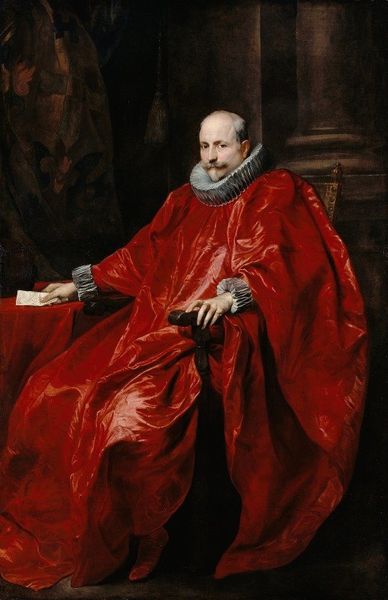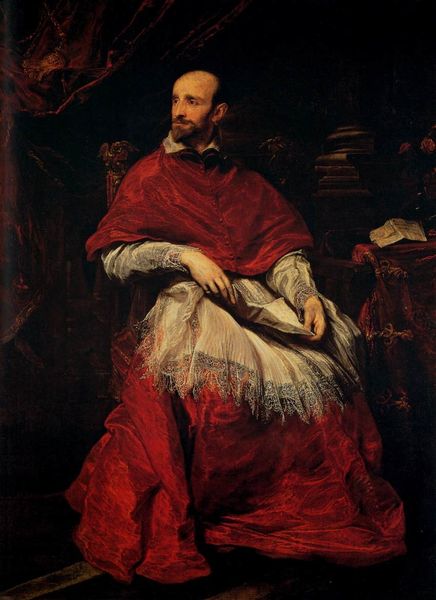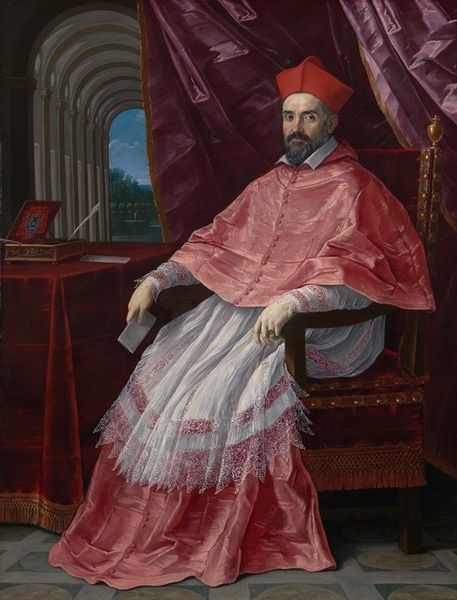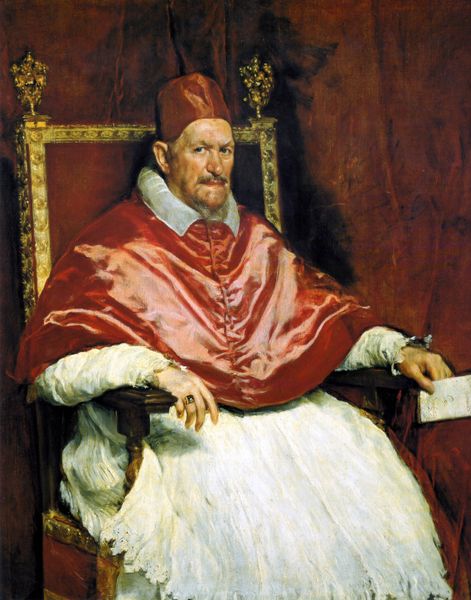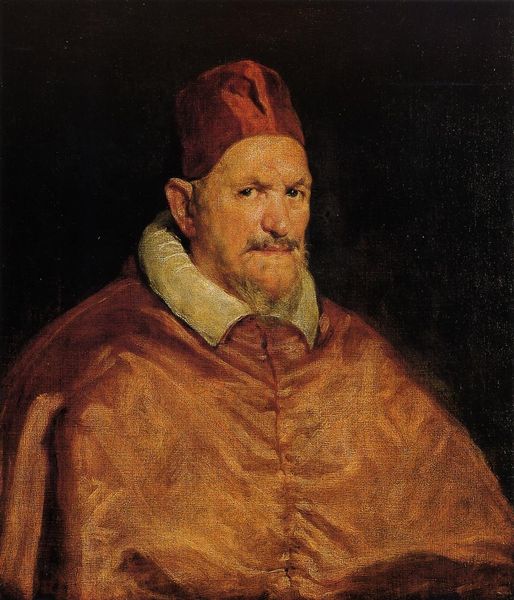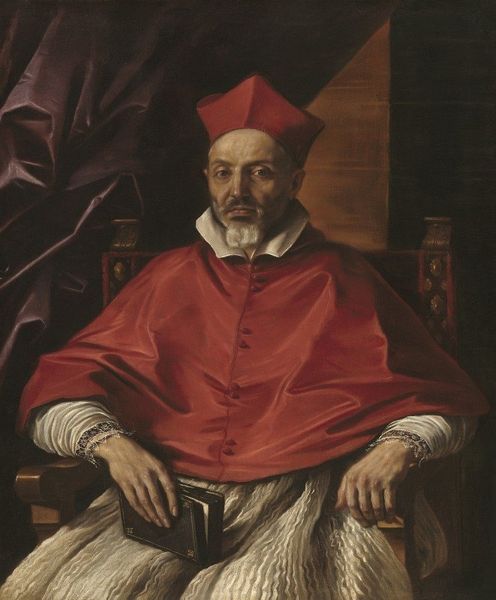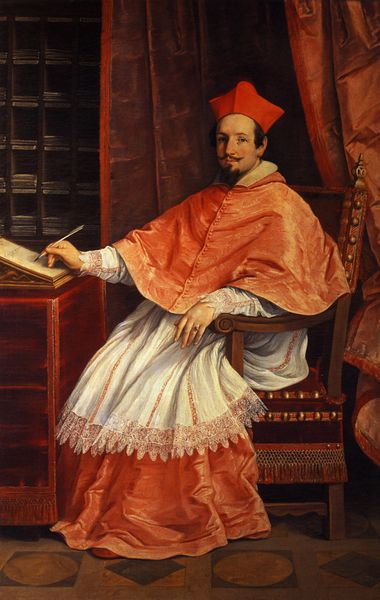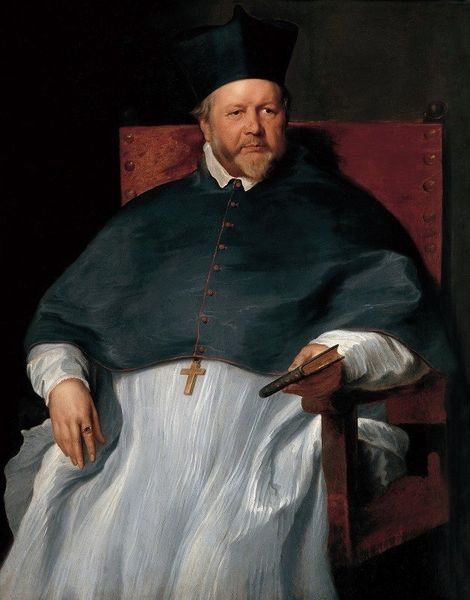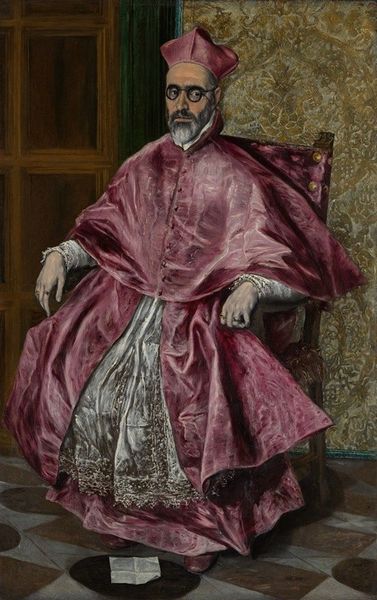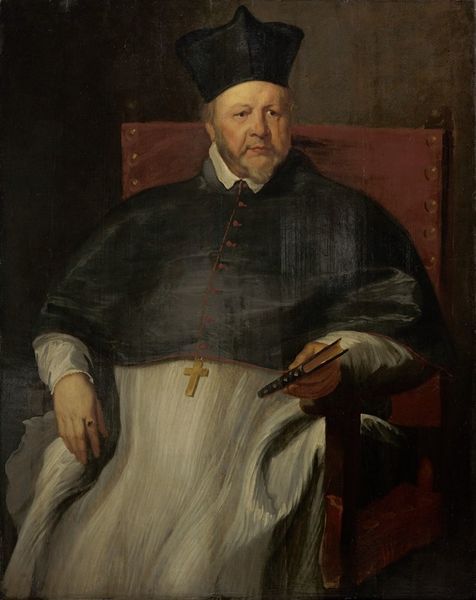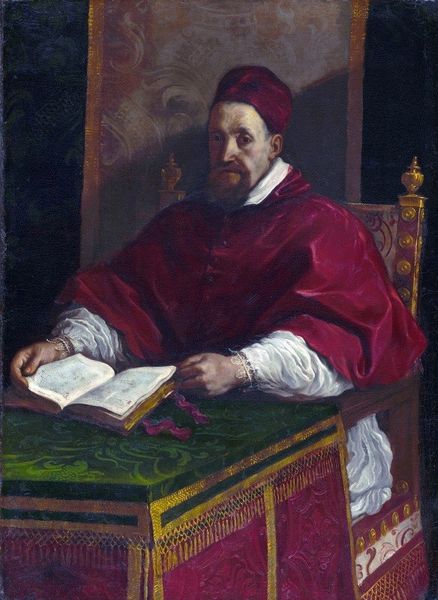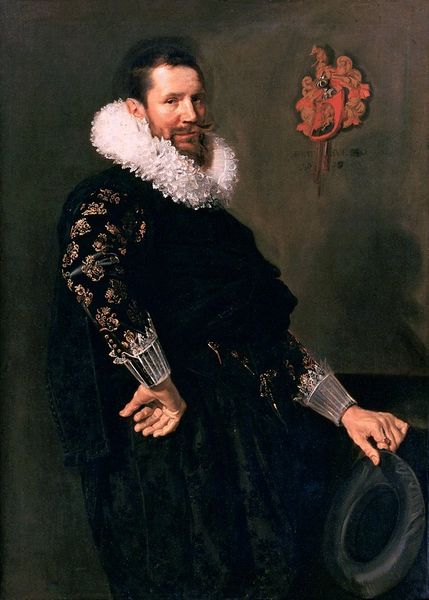
painting, oil-paint
#
portrait
#
baroque
#
painting
#
oil-paint
#
oil painting
#
history-painting
#
academic-art
Copyright: Public domain
Curator: What a commanding portrait. The opulence of the red robes is striking. Editor: It’s like being enveloped in a wave of expensive fabric, isn’t it? I am immediately drawn to the deep, saturated colour. Curator: Indeed. This is Anthony van Dyck’s 1621 portrait of Agostino Pallavicini, now residing at the J. Paul Getty Museum. What do you make of it in relation to its context? Editor: Well, beyond the obvious display of wealth, it’s impossible to ignore the texture rendered with such clear detail. The almost excessive attention devoted to the folds of his garment suggest a culture preoccupied with displays of material success and access to luxury materials. The fact that it’s oil paint solidifies its status as a luxury commodity intended for a particular market. Curator: I see what you mean. The handling of that red robe is exceptional. Notice how Van Dyck uses light and shadow to create a sense of volume and movement in the fabric, drawing the viewer's eye and emphasizing Pallavicini's stature and authority. What do we know about Pallavicini and the societal moment it represents? Editor: Agostino Pallavicini was a Genoese nobleman, and Doge of Genoa. This portrait showcases the fashion and tastes of the Italian Baroque era and also reveals how the artist helped shape perceptions about authority and wealth in a period characterized by complex class structures and courtly rituals. I am curious, how might the production and consumption of van Dyck's portraits be seen in relation to social stratification during the Baroque period? Curator: That’s fascinating to consider. It reminds us how artistic patronage and the market forces are central to shaping not just artistic careers, but social identities and perceptions during those periods. Editor: Precisely. The painting's reception at the time—the discussions around it, the social circles in which it circulated, these details add to our awareness of the artwork. Curator: Indeed, thinking through that perspective offers valuable insights beyond the purely aesthetic. Editor: Well, after considering these issues around this particular moment, I'll leave with a deepened curiosity about Baroque culture. Curator: I agree, a great point to pause our contemplation of this very material rendering of societal constructs in the 17th century.
Comments
No comments
Be the first to comment and join the conversation on the ultimate creative platform.
